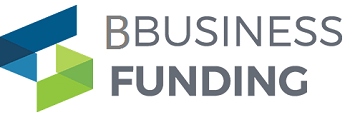In most cases, you would have witnessed a big gap in how promotions are captured and used for the planning process. This is because in most companies, the operations department & Marketing department are not always in sync. Companies mostly use price as a pivotal point to establish strategic goals, such as enhancing sales, encouraging product trials, gaining a competitive edge, etc.
For products with elastic demand, price changes can result in issues of distribution, fulfillment, and inventory, having severe implications for stockouts and loss of revenue , and can lessen customer satisfaction. Thus, proper promotion planning is essential.
Pricing and Promotion Analysis
Optimizing the use of tools, tactics, and resources to market a product and increase demand is the definition of promotion planning. You choose your product to promote, decide on your promotion budget, and identify your potential clients to do this.
The cause of the gap between corporate departments is frequently unimportant. For instance, pricing and promotional information are frequently held in a trade promotion or product information management system. At the same time, inventory is controlled in a different, disconnected system (ERP or WMS). Whatever the underlying cause, a pricing and promotion planning solution aids planners in isolating price as the primary variable in a multivariate situation and producing a promoted prediction that can be easily contrasted with one or more base forecasts.
An ideal pricing and promotion analysis solution employs price elasticity models and machine learning algorithms to produce projections influenced by promotions. In the face of frequent pricing changes, planners will have a method to do a detailed what-if analysis. Utilizing technology, users can determine how pricing and advertising affect demand (the “lift”) and take appropriate measures to guarantee enough inventory positions.
Enrich Your Demand Planning Capabilities
Analysis of pricing and promotions will help businesses that:
- Have a fundamental forecasting discipline in place but need a systematic method to estimate price change outcomes and account for variations in significant parts (location, region, etc.)
- Have outgrown manual tools and are frequently bogged down in numerous spreadsheets from various sources.
- Want a powerful promotion lift solution to enhance their demand planning abilities and produce a price-adjusted forecast to coordinate inventory decisions with marketing initiatives.
- Have enough price and sales information at the SKU and product category levels.
Companies must ensure that data is correct and thorough to make the most of the technology. They must also ensure that confounding events such as seasonality, company changes, market changes, or a mix of these have balanced the data and crucial disguised nuances.
Why Should We Consider Promotion Planning in Inventory Management?
Retail businesses are concerned with the inventory they store, regardless of whether they operate online, offline, or both. They suffer extra costs and don’t get to enjoy their profits as much when they have too much stock. Too little, and they lose sales and occasionally consumers as the market becomes more and more competitive. No business wants to trail its rivals by even a single step.
Thus it is critical that inventory levels must be modified during promotional planning to satisfy demand peaks, particularly for significant events surrounding holidays and special days. Advanced analytics must be used to examine previous demand patterns, connect demand peaks to promotional offers, and modify estimates for the future in light of planned promotions. This processing and prediction may be easily automated thanks to the availability of several tools and digital solutions. Granular, promotion-sensitive demand predictions are then utilized to modify inventory targets and inform further replenishment and procurement choices. The availability of the various sizes of products increases when demand forecasting, inventory planning, replenishment, and procurement are carried out in an integrated manner, increasing sales.
Additionally, inventory availability significantly impacts business KPIs like customer satisfaction and sales conversion. Therefore, effective inventory management enhances both brand reputation and business outcomes.
Data learning, machine learning, and artificial intelligence are the answer. A Sophisticated Software for promotion planning comes in handy here, and data analytics holds the key to integrating promotions while controlling inventory. Artificial intelligence (AI) and machine learning (ML) are two of the most astonishing tools the new millennium has brought to innovation. These two technologies, together with a good promotion planning software, make it possible to solve the majority of modern company challenges. Utilize retail promotion analytics to gather data on previous sales, sort the data, analyze the data, and come up with suggestions and actions. These actions are made possible by ML & AI, but they do not occur magically overnight.
Dealing With the Unavoidable
As you have undoubtedly inferred, it all comes down to the reliability of the models based on the data and the quality of the data itself. Even the most talented analysts cannot be sure of their choices if the fundamental input is inaccurate or missing.
In conclusion, planners must acknowledge and accept that marketers will constantly seize the opportunity to utilize pricing as a motivator, frequently placing them in difficult situations. Considering this reality, a pricing and promotion planning solution is critical.
About the Company
Fountain9 is a company that assists businesses in aligning promotion planning with inventory planning through Kronoscope, their promotion planning software. Kronoscope’s AI engine utilizes an ensemble of multiple algorithms to factor in historical events data and future events calendars to find similar types of events and then predicts the demand uplift in the event period.
Kronoscope provides insights on a granular scale helping demand planners get a promotional uplift chart that showcases the forecasted demand for a particular SKU for an upcoming event. It also undertakes real-time calculations to provide the planners with the best possible demand suggestions. This ensures that Kronoscope easily accounts for the complexities of sales promotions with predictive analytics, allowing businesses to see the future outcome of any given promotion.

